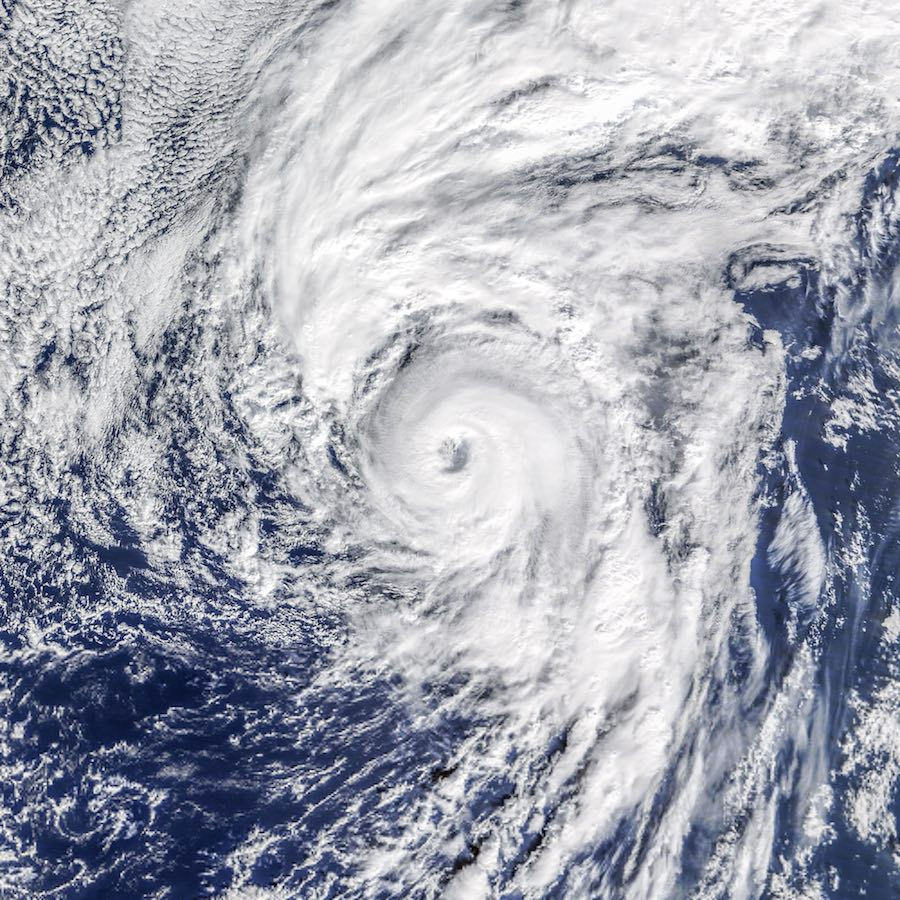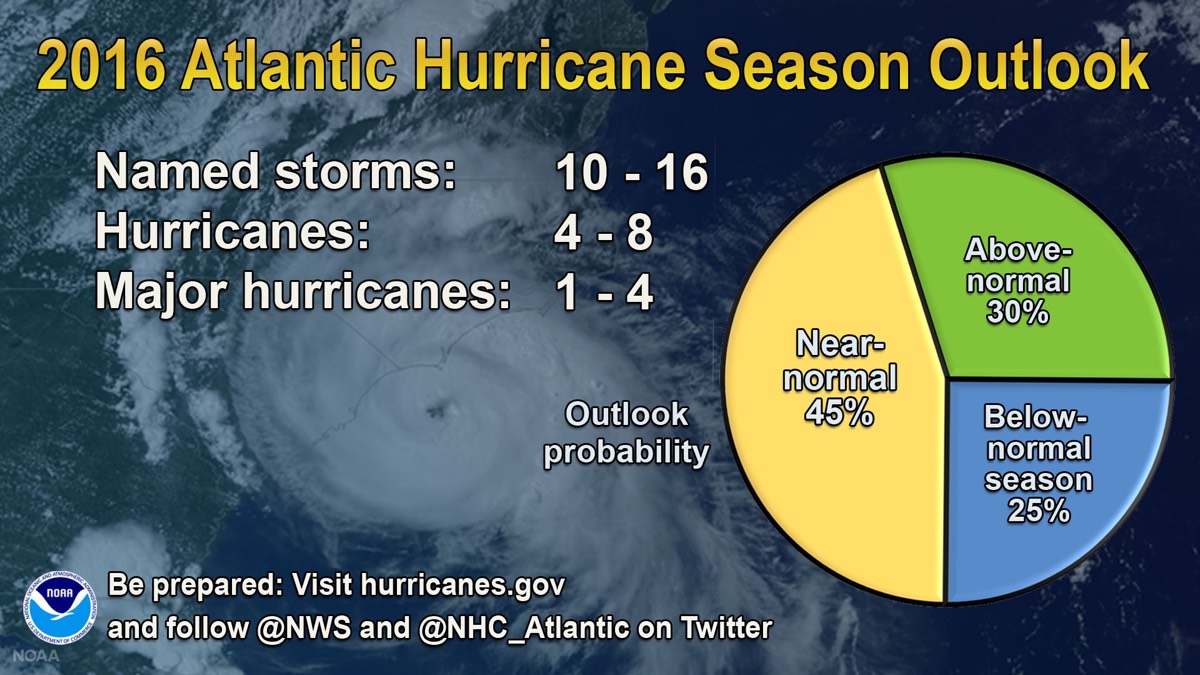Hurricane 2016 Forecast: A 'Near-Normal' 10 to 16 Storms

Hurricane season officially kicks off tomorrow (June 1), and forecasters expect the Atlantic Ocean will spawn a near-average number of hurricanes in 2016.
"Near-normal may sound relaxed and encouraging, but we could be in for more activity than we've seen in recent years," warned Kathryn Sullivan, head of the National Oceanic and Atmospheric Administration (NOAA). Officials with NOAA issued the forecast at a news conference Friday (May 27) in Suitland, Maryland. NOAA has released a hurricane forecast each year since 2000.
The past three years have seen a hurricane drought in the Atlantic. There were only four hurricanes and seven tropical storms in 2015. A typical hurricane season, which runs through Nov. 30, sees six hurricanes. [A History of Destruction: 8 Great Hurricanes]
The 2016 NOAA forecast calls for a total of 10 to 16 named storms, including both tropical storms and hurricanes. This year's Hurricane Alex, a rare January hurricane, counts as one of these named storms. Tropical Storm Bonnie, which made landfall in South Carolina on Saturday (May 28), is the year's second named storm.
The forecast predicts between four and eight named storms may become hurricanes — organized, rotating storms with sustained winds of 74 mph (119 km/h) or faster. Between one and four could become major hurricanes, defined as Category 3 storms or above — or those hurricanes with winds of at least 111 mph (179 km/h).
Unpredictable patterns
The 2016 hurricane forecast is NOAA's most accurate and reliable yet, Sullivan said. However, two major climate factors could tweak the expected storm numbers, NOAA forecasters said Friday.
"This is a more challenging hurricane season outlook than most because it's difficult to determine whether there will be reinforcing or competing climate influences on tropical storm development," said Gerry Bell, lead seasonal hurricane forecaster with NOAA's Climate Prediction Center.
Sign up for the Live Science daily newsletter now
Get the world’s most fascinating discoveries delivered straight to your inbox.

There are two big climate influences on hurricanes — the Pacific Ocean's El Niño/La Niña cycle and the Atlantic Multidecadal Oscillation (AMO). Both are natural climate patterns that influence ocean surface temperatures and wind patterns, two critical ingredients in creating hurricanes.
An active El Niño favors more hurricanes in the eastern Pacific and fewer storms in the Atlantic, Sullivan said. According to NOAA, the 2015-2016 El Niño is fading and the pattern may flip over to its cooler La Niña phase sometime after August, when hurricane season peaks. La Niña favors a more active Atlantic hurricane season.
The Atlantic Multidecadal Oscillation, which flips back and forth every 25 to 40 years, also shows hints of switching to a cool phase, Sullivan said. When the AMO is in a cool phase, the Atlantic generally sees fewer hurricanes. "If this shift proves to be more than short-lived, and not just a temporary blip, then it could signal the arrival of lower activity," in the Atlantic, Sullivan said.
The current hurricane forecast offers three scenarios, of which the first is most likely.
- Scenario 1: Near-normal season if La Niña develops and the conditions associated with a low-activity phase and cool AMO also develop.
- Scenario 2: Above-normal season if both La Niña and the conditions associated with the high-activity phase and warm AMO develop.
- Scenario 3: Below-normal season if La Niña does not develop and conditions typically associated with a low-activity phase and cool AMO do develop.
Pacific prediction
Although the Atlantic Ocean was quiet during the 2015 hurricane season, the eastern Pacific was smacked by storm after storm. The region was hit by its strongest storm on record, Hurricane Patricia, and saw 18 named storms, including 13 hurricanes, of which nine reached major hurricane status. An average season in the eastern Pacific has 15.3 named storms, including 8.5 hurricanes, of which an average of 3.8 are major hurricanes, according to NOAA.
For the eastern Pacific, NOAA is forecasting 13 to 20 named storms, including six to 11 hurricanes, of which three to six are expected to be major hurricanes.
The seasonal forecasts do not offer predictions about whether any storms will make landfall in the United States. That's because weather patterns in place when a hurricane approaches have a major effect on the storm's path, so landfall is predictable only when the storm is within several days of making landfall.
The hurricane season outlook will be updated in early August, at the onset of the peak months of the hurricane season.
Original article on Live Science.










